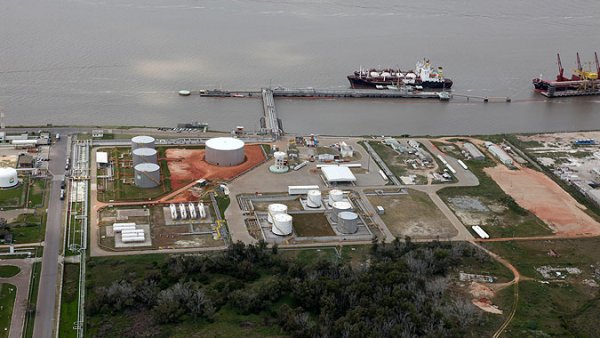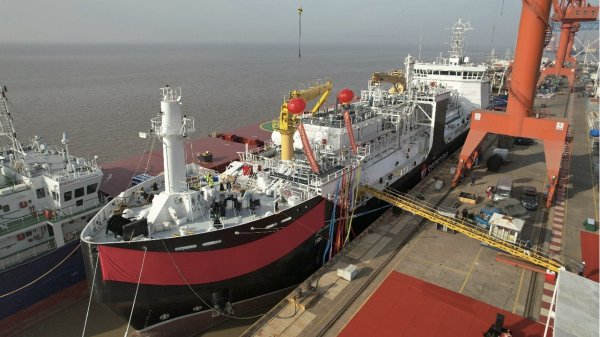Maersk Line recorded two incidents of sulphur non-compliance in 2017
Shipper stresses that it makes more than 50,000 port calls a year and did not financially benefit from the incidents.
Maersk Line recorded two incidents of sulphur non-compliance in 2017, A.P. Moller - Maersk (Maersk) has confirmed.
In the group's '2017 Sustainability Report', released on Friday, Maersk notes that the incidents took place in Emission Control Areas (ECAs) where a 0.1 percent cap on the sulphur content of fuel is already being enforced.
The first non-compliance was determined on a Maersk Line vessel calling at Long Beach, California, in March 2017, with the sulphur content at nearly 0.2 percent in an area where the sulphur limit is 0.1 percent.
According to Maersk, an internal investigation confirmed that the vessel carried compliant fuel, and that the contamination was due to human error in the switchover procedure.
In July 2017, a Maersk Line vessel in the port of Antwerp, Belgium, was deemed to be in breach of the area's fuel sulphur limit of 0.1 percent.
Maersk says an internal investigation found that the vessel's low-sulphur fuel tank had been contaminated due to human error in operating two butterfly valves between the ship's high-sulphur and low-sulphur fuel tanks.
The contamination is said to have raised the sulphur level in the low-sulphur fuel tank to around 0.2 percent.
"We carried out a complete cleaning of the low-sulphur tanks and the onboard systems. [We] have implemented specific procedures to avoid this kind of contamination on all relevant vessels," Maersk explained.
According to the report, Maersk Line makes more than 50,000 port calls on an annual basis, which means approximately 0.004 percent (or less) of the calls resulted in non-compliance being determined.
Maersk also stressed that it had gained "no financial benefits from the two incidents".
In the group's '2017 Sustainability Report', released on Friday, Maersk notes that the incidents took place in Emission Control Areas (ECAs) where a 0.1 percent cap on the sulphur content of fuel is already being enforced.
The first non-compliance was determined on a Maersk Line vessel calling at Long Beach, California, in March 2017, with the sulphur content at nearly 0.2 percent in an area where the sulphur limit is 0.1 percent.
According to Maersk, an internal investigation confirmed that the vessel carried compliant fuel, and that the contamination was due to human error in the switchover procedure.
In July 2017, a Maersk Line vessel in the port of Antwerp, Belgium, was deemed to be in breach of the area's fuel sulphur limit of 0.1 percent.
Maersk says an internal investigation found that the vessel's low-sulphur fuel tank had been contaminated due to human error in operating two butterfly valves between the ship's high-sulphur and low-sulphur fuel tanks.
The contamination is said to have raised the sulphur level in the low-sulphur fuel tank to around 0.2 percent.
"We carried out a complete cleaning of the low-sulphur tanks and the onboard systems. [We] have implemented specific procedures to avoid this kind of contamination on all relevant vessels," Maersk explained.
According to the report, Maersk Line makes more than 50,000 port calls on an annual basis, which means approximately 0.004 percent (or less) of the calls resulted in non-compliance being determined.
Maersk also stressed that it had gained "no financial benefits from the two incidents".

|
IMO approves pricing mechanism based on GHG intensity thresholds
Charges to be levied on ships that do not meet yearly GHG fuel intensity reduction targets. |
|
|
|
||

|
VARO Energy expands renewable portfolio with Preem acquisition
All-cash transaction expected to complete in the latter half of 2025. |
|
|
|
||

|
NYK trials biofuel in milestone coal carrier test
Vessel is used to test biofuel for domestic utility company. |
|
|
|
||

|
H-Line Shipping orders LNG bunkering vessel
Vessel with 18,000-cbm capacity to run on both LNG and MDO. |
|
|
|
||

|
How to engineer and manage green shipping fuels | Stanley George, VPS
Effective management strategies and insights for evolving fuel use. |
|
|
|
||

|
Swedish government bans scrubber wastewater discharges
Discharges from open-loop scrubbers to be prohibited in Swedish waters from July 2025. |
|
|
|
||

|
MAN Energy Solutions achieves 100% load milestone for ammonia engine
Latest tests validate fuel injection system throughout the entire load curve. |
|
|
|
||

|
Petrobras secures ISCC EU RED certification for B24 biofuel blend at Rio Grande
Blend consisting of 24% FAME is said to have been rigorously tested to meet international standards. |
|
|
|
||

|
Stolt-Nielsen to fully control Avenir LNG with acquisition
Share purchase agreement to buy all shares from Golar LNG and Aequitas. |
|
|
|
||

|
Bureau Veritas supports launch of CIMC SOE's LNG bunkering vessel
Handover of Seaspan Energy's cutting-edge 7,600-cbm vessel completed. |
|
|
|
||
Related Links
- · Maersk Line spent $1.2bn more on bunkers in 2017; average price was highest since 2014 [Insights]
- · Maersk Line posts $336m profit swing despite spending $218m more on bunkers [Insights]
- · Maersk pulls out of MSAR fuel trial [Insights]
- · Maersk, AkzoNobel in tie-up to slash carbon emissions [Insights]
- · Denmark [Directory]

